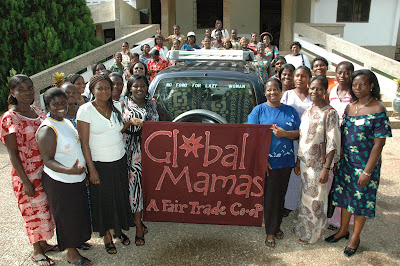 |
| CEIP class in session |
Why CEIP?
The Craft Enterprise Incubation Program was created to provide participants with the tools, skills and information necessary to run sustainable craft enterprises.The craft sector has often been defined along very narrow and traditional terms that fail to recognize the innovation taking place within the sector. Within this definition, the sector is considered a low priority socioeconomic option and therefore no infrastructure is developed to catalyze its growth.
Against this background, Craft Afrika developed a number of products and services to recognize and support young craftpreneurs who are challenging the old mindset associated with the sector. One of these services is the training program, CEIP.
What is CEIP?
 |
| Kristin of Calla [R] going through a product critique |
*5 modules that cover [a] an intro to craft entrepreneurship [b] product development [c] market access [d] wealth creation and [d] protecting creativity through copyright
*Field trips
*Invited guest talks
*Access to business funds through our partner Kiva
*An exhibit at one of Kenya's top craft fairs, Bizarre Bazaar craft festival
*A 6month structured mentorship program that kicks off immediately after the training
These components work together to provide an experiential learning approach, with participants being encouraged to gain and experiment with knowledge in real time.
How to join CEIP
The program accepts a maximum of 10 students to allow for one on one interaction.To join the program:
* You must be currently running a craft enterprise
* Availability to attend classes Wednesday, Thursday and Friday, [10am - 4pm] including the exhibition scheduled for mid June
* The ability to work as part of a team as well as take on leadership responsibilities
* An open mind and a willingness to learn
* Financial capacity to pay the course fee of 30,000 Kenya shillings
To access the application form, click here. Download the form as a word document, fill it out in its entirety and send it back to craft@craftafrika.org by 31January2014 at midnight. Interviews will be conducted 13/14February2014 and successful applicants will be notified by 19February2014.
Through the generous support of our partner Biz Baz Events, we are able to offer 5 partial scholarships worth 10,000 Kenya shillings each.
These opportunities are open to all interested although preference will be given to practitioners with innovative craft products or who are working within the "growth opportunity" sub sectors including ceramics, glass, children's toys and games, bath and body products, ethnic jewellery, woodwork and home decor items. Please note that this is not an exhaustive list and we encourage you to apply for the opportunity if you feel you have an innovative product.
CEIP alumni comment on the program:
Gillianne Obaso - Ma Phoebe's sauces & relishes "It [CEIP] was a wonderful ambiance of generosity, vulnerability and sharing. The first module was on self-analysis because apparently [and this came as a shock to me] your business practices are a reflection of who you are! It has been a mind bending, eye-opening, gut-wrenching experience and I absolutely loved it!!"
Carol Maina - Estiira Designs "The program was an eye opener in so many aspects; what i am doing, why i am doing it, what I want out of life, what my main focus is..."
Deborah Wanjugu - cultural advocate"CEIP has saved me at least five years of aimless
wandering, because i would never have had this clarity of mind and laser sharp
focus without this course. Please
apply to be in the next cohort. I promise you, it will be worth every
penny!"
Larrissa Muthoni - Zamoyo "My progress is mostly marked in the change of my mindset. I have learned to appreciate my craft and believe that it could be a sustainable career and not a by-the-way hobby. The cultural link to what I do everyday and the responsibility I have as an artist to use my chosen medium to contribute to the preservation of our cultural heritage is what has most resonated with me out of the whole course."
For more images from our first CEIP, click here
We look forward to receiving your application and best of luck!
















